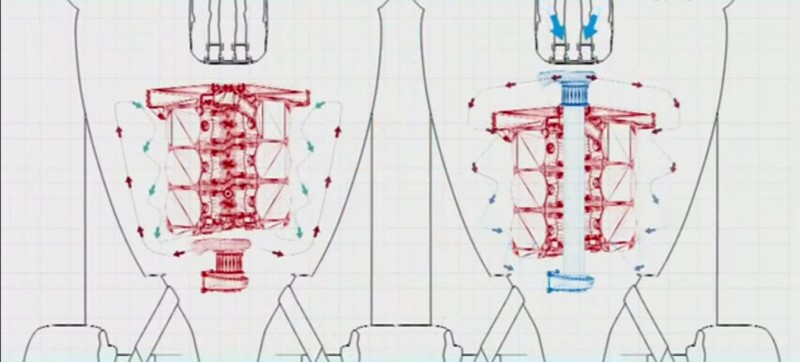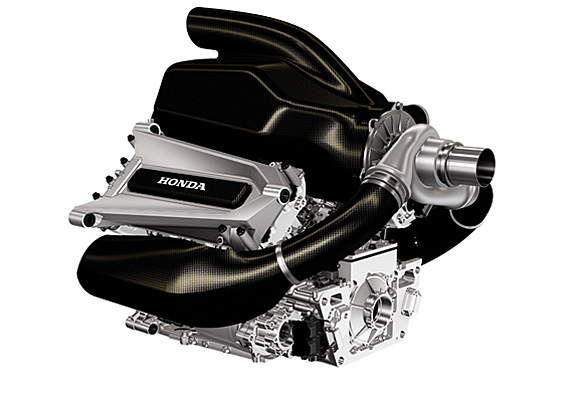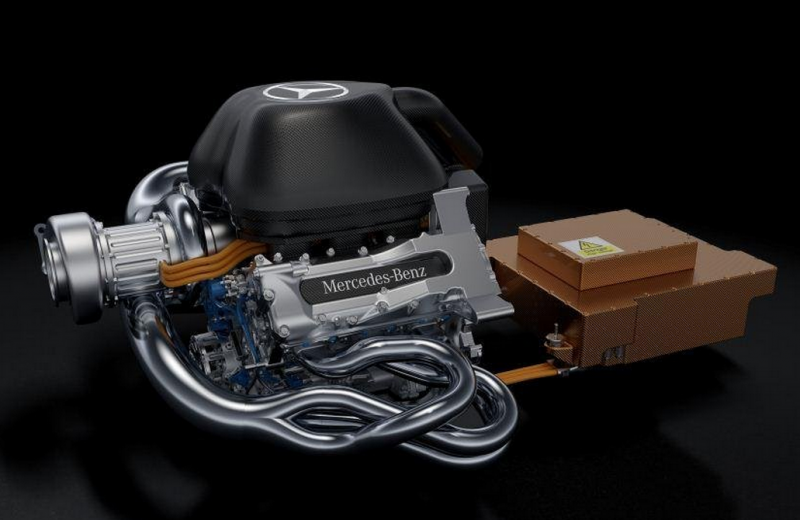The 2015 Formula 1 season has been defined by several occurrences, including the financial difficulty of several teams, the FRIC controversy, and, perhaps more notably, the Mercedes dominance of the grid this year. At times, the season has devolved into merely a competition between the two Mercedes drivers, not between any of the opposing teams. With Mercedes having almost twice as many points as number two Red Bull, one has to wonder what has caused the team to be so dominant. Their drivers, Lewis Hamilton and Nico Rosberg, can’t just be that good, can they? Most would say not. In fact, much of the Formula 1 community has been pointing to one blindingly simple, yet powerful feature employed by the Mercedes engine- their turbocharger.
After a long stay in the naturally aspirated arena, Formula 1 has returned to turbocharged power, and the units used on the 1.6 liter six cylinder engine are among the most advanced in the world. Despite the fact that this year’s formula only employs one turbo, rather than the conventional two for six cylinder engines, the difference is made up in innovation. Formula 1 has concocted their own novel way to combat turbo lag, using their Energy Recovery System. In today’s Formula 1 cars, the turbine(the part of the turbo being spun by the exhaust gases) is attached to an electric generator. It converts excess heat and energy from the exhaust gases and rotations of the turbocharger during deceleration, into usable energy that is stored in the car’s batteries. This energy can then be used in one of two places; it can be used to spool the turbo at lower rpm ranges, to give an added power boost when coming out of a corner, or it can be transmitted as power to an electric motor helping to turn the wheels, essentially adding power directly to the drive-shaft. Stored energy recovered from the regenerative braking system can also be used for both of these effects.
In all designs for this year(except Mercedes’,) the turbocharger is located on the engine end towards the rear of the car. A major drawback of this design, and many turbochargers in general, is the fact that, since the turbine is right next to the compressor(the part of the turbo forcing air into the intake,) exhaust gases can cause the compressor, and thus the air being fed into the intake, to be incredibly hot. Since the rise in intake air temperature would be incredibly deleterious for a number of obvious reasons, Formula 1 cars use two massive intercoolers to cool incoming air, which rest in each of the sidepods on the left and right of the engine. Air is fed through these, then funneled back into the intake, to ensure a reasonable air temperature.

Now, how does the Mercedes design make this already incredibly advanced design even more novel? Their innovation is incredibly simple, yet it has arguably changed the face of turbocharger technology in Formula 1 and impelled their dominance of the current season. Essentially, Mercedes engineers split the turbo into two pieces. They left the turbine at the rear of the engine, but moved the compressor towards the front of the engine. The compressor is then driven by a shaft, which spans the horizontal length of the engine on a plane even with the crankshaft. This allows for several advantages. Firstly, since the compressor is no longer in proximity to the exhaust gases being fed through the turbine, the airflow is not nearly as hot. Consequently, the engine can afford to feed air through a much smaller pair of intercoolers than was previously possible. This serves to narrow the overall horizontal profile of the car, imparting obvious aerodynamic advantages on that front.
The design also serves to decrease turbo lag, due to the fact that the overall path being taken by the air flow has been greatly reduced; since the compressor is not located at the back of the engine, air does not have loop back. This allows for the trubo to spool more quickly and for the system to be otherwise more efficient, not draining as much energy from the battery pack. But the advantages don’t stop there. Since the turbocharger apparatus at the rear of the engine is now much more compact, other components can be moved farther forward. Components such as the gearbox can be moved forward, closer to the center of of the car. With a more centralized center of gravity, the car now demonstrates better handling, control, and lateral acceleration. Also of consequence is the fact that placing both the compressor and the turbine adjacent to each other on the back of the engine reduces the allowed size of the compressor; Mercedes has been able to mount a much larger compressor, which is massive compared to other Formula 1 engines. Since the aforementioned energy recovery system is used to eliminate lag, compressor size is not limited due to high boost threshold concerns.
Also helping Mercedes’ cause is the fact that engine development was frozen mid-season, beginning back in June. This essentially ensures that no other teams can move to copy the Mercedes design until next season. The Mercedes team also has an advantage over the other teams using their engines. Since the Mercedes engine manufacturer has been developing the engine for quite some time and was able to undertake testing and implementation long before any privateer teams receiving the engine, the factory team obviously has a much greater insight and grasp of the power unit’s capabilities. Williams is running the Mercedes power unit as well and ranks in a steady third place, behind Red Bull. Considering the Williams team’s budget is quite low compared to other teams, this is an extraordinary accomplishment, that is likely due in no small part to their Mercedes power choice. McLaren and Force India are also making use of the Mercedes power unit but are faring noticeably less well, placing 5th and 6th in the rankings, respectively.
Whether or not the new Mercedes turbo design will be implemented by all engine suppliers for next season remains to be seen. Honda, returning to Formula 1 as an engine supplier for 2015, has released preliminary renderings of their engine and has made it apparent that they are not following Mercedes’ “split turbo” design; the Honda turbo is also comparatively small. However, this may be subject to change. Ferrari is almost certainly changing their design, and Renault has been rumored to be strongly considering it. It remains to be seen if this will erode some of Mercedes’ edge on the track, or if they will remain the dominant force next season. With Honda added to the mix of engine suppliers, and other engine manufacturers rushing to innovate their designs so as not to be left behind, there should be no doubt, next season will be one to watch on the technological front.













